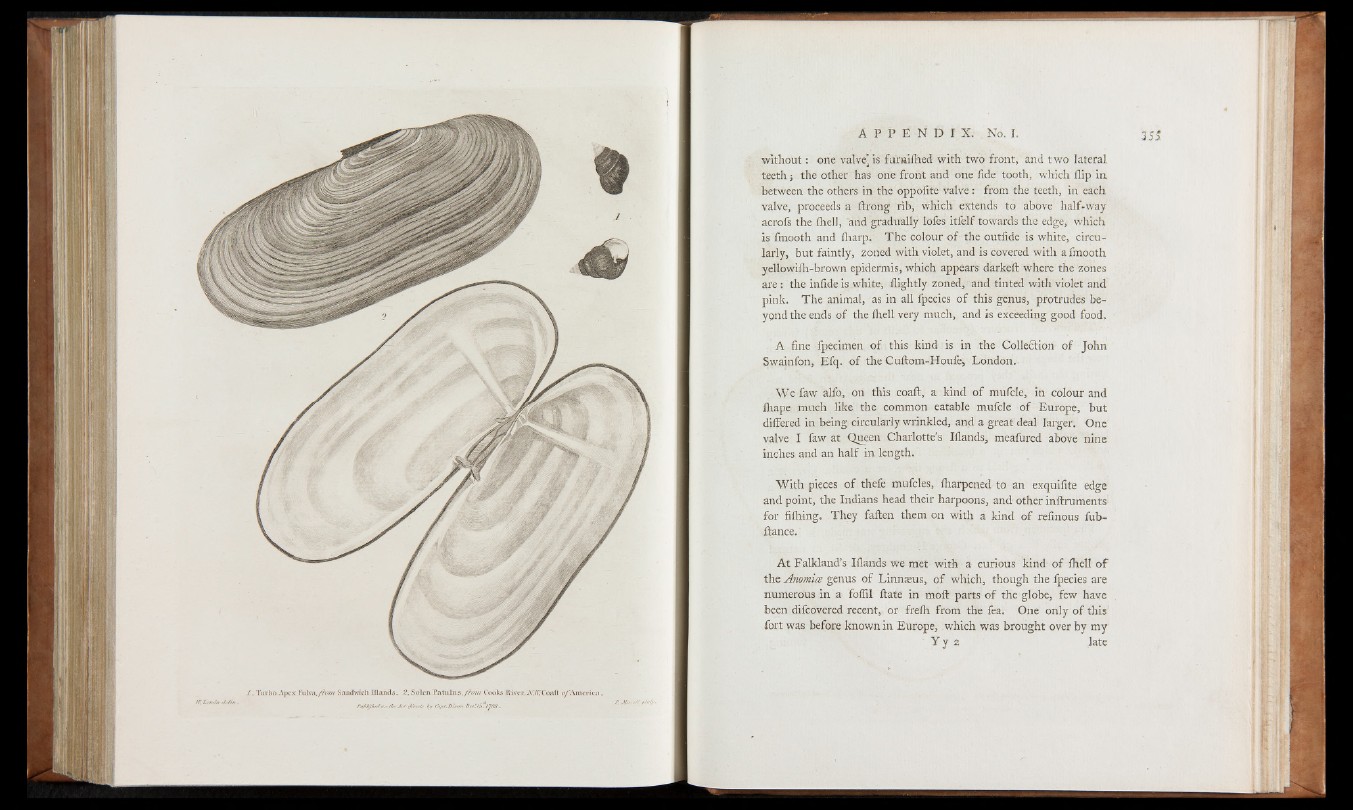
A P P E N D I X . No.I.
without: one valve] is furnifhed with two front, and two lateral
teeth j the other has one front and one fide tooth, which flip in,
between the others in the oppolite valve: from the teeth, in each
valve, proceeds a flrong rib, which extends to above half-way
acrofs the fliell, and gradually lofes itfelf towards the edge, which
is fmooth and fliarp. The colour of'the outfide is white, circularly,
but faintly, zoned with violet, and is covered with a fmooth
yellowifh-brown epidermis, which appears darkeft where the zones
are: the infide is white, High tly zoned, and tinted with violet and
pink. The animal, as in all fpecies of this genus, protrudes be-
ygnd the ends of the fliell very much, and is exceeding good food.
A fine fpecimen of this kind is in the Collection of John
Swainfon, Efq.. of the Cuftom-Houfe, London..
We faw alfo, on this coaft, a kind of mufcle, in colour and
fhape much like the common eatable mufcle of Europe, but
differed in being circularly wrinkled, and a great deal larger. One
valve I faw at Queen Charlotte’s Iflands, meafured above nine
inches and an half in length.
With pieces of thefe mufcles, fharpened to an exquifite edge
and point, the Indians head their harpoons, and other inftruments
for filhing. They fallen them on with a kind of refinous fub-
ftance.
At Falkland’s Iflands we met with a curious kind of fhell o f
the Anomice genus of Linnaeus, o f which, though the fpecies are
numerous in a foflil flate in mofl: parts of the globe, few have
been difcovered recent, or frefh from the fea. One only of this
fort was before known in Europe, which was brought over by my
Y y 2 late